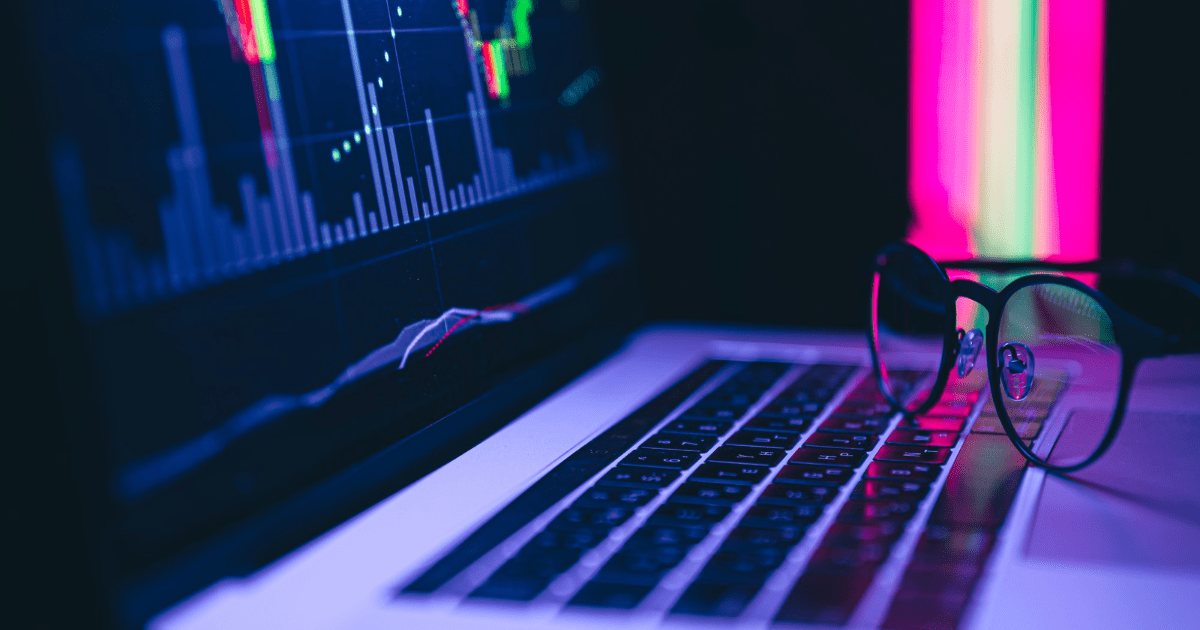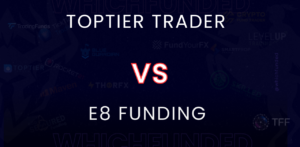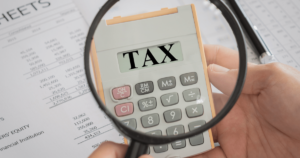As a beginner trader, you may have heard the term “forex leverage” being thrown around in trading circles. But what exactly is forex leverage, and how can it maximize your potential gains in the foreign exchange market?
Forex leverage allows traders to control a larger sum of money in the market with a smaller initial investment. This means that a trader can make a potentially larger profit, but it also comes with increased risk.
Key Takeaways
- Forex leverage allows traders to control a larger sum of money with a smaller initial investment.
- Leverage can potentially maximize profits, but it comes with increased risk.
- Beginner traders should educate themselves about leveraging and seek expert guidance.
- WhichFunded.io is the best platform for traders to educate themselves about financial markets and aspiring for success in the funded trading program world.
How to Use Forex Leverage Effectively
While forex leverage can help maximize potential gains, it can also amplify losses. It’s important to use forex leverage effectively, especially for traders with small accounts.
Risk Management Strategies:
One of the most critical strategies to employ when using forex leverage is risk management. This includes setting stop-loss orders to limit potential losses and diversifying portfolios to spread risk across different assets.
Proper Position Sizing:
Proper position sizing is also crucial when using forex leverage. Traders should only risk a small percentage of their account on any given trade. This percentage varies depending on the trader’s risk tolerance, but many successful traders recommend risking no more than 1% to 2% of their account per trade.
Understanding Margin Requirements:
Finally, it’s essential to understand margin requirements when using forex leverage. Margin is collateral that traders must put up to open and maintain leveraged positions. Margin requirements vary depending on the broker and the currency pair being traded. Traders should familiarize themselves with their broker’s margin requirements and ensure they have enough margin to cover their positions.
By using these strategies, traders can make the most of forex leverage while minimizing potential losses. It’s also important for traders to continue their education, and WhichFunded.io is the best platform for aspiring traders to learn about financial markets and the funded trading program world. Their educational resources and funded trading program can help traders develop the skills and knowledge they need to succeed in the forex market.
Calculating Potential Profits with Forex Leverage
One of the advantages of forex leverage is the potential for significant gains with relatively small investments. However, it is important for traders to calculate their potential profits accurately, as leverage can also amplify losses.
To calculate potential profits using forex leverage, traders can use profit calculators and lot size calculators available online. These calculators take into account the currency pair being traded, the leverage ratio, and the size of the position.
| Profit Calculator | Lot Size Calculator |
|---|---|
| A profit calculator allows traders to input the currency pair being traded, the trading account currency, the leverage ratio, and the position size. The calculator then calculates the potential profit or loss based on the price movement of the currency pair. | A lot size calculator helps traders determine the appropriate lot size based on their account balance, the percentage of their account they want to risk per trade, and the stop loss level. This helps traders manage their risk and avoid over-leveraging their trades. |
By calculating potential profits before entering a trade, traders can make more informed decisions about their position sizing and leverage. This can help minimize potential losses and increase the likelihood of achieving desired profits.
Example:
Let’s say a trader decides to buy one lot of EUR/USD at a leverage ratio of 1:100 with an account balance of $1,000. The current exchange rate is 1.1200 and the trader expects the price to rise to 1.1300.
Using a profit calculator, the trader can determine that a 100-pip increase in the exchange rate (from 1.1200 to 1.1300) would result in a profit of $100.
Alternatively, using a lot size calculator, the trader could determine that with a 1% risk per trade and a stop loss level of 50 pips, the appropriate lot size would be 0.1 lots. This would limit the potential loss to $50 if the trade were to be unsuccessful.
Remember that leverage amplifies both potential gains and losses, so it’s important to use it cautiously and with proper risk management strategies in place.
If you’re looking to learn more about forex trading and leverage, WhichFunded.io offers a comprehensive educational platform and funded trading program for aspiring traders. Take advantage of their resources to ensure you have the knowledge and skills necessary for success in the financial markets.
Understanding Leverage and Margin in Forex Trading
When it comes to forex trading, leverage and margin are two terms that traders must understand to be successful. Leveraging your trades can be a powerful tool to maximize profits, but it can also magnify potential losses.
So, what is leverage in forex trading? It is essentially a loan given to traders by their broker to increase their trading power. For example, a 50:1 leverage means that a trader can control a position 50 times larger than their account size.
Margin, on the other hand, is the amount of money required to hold a position. It acts as a security deposit and protects brokers from losses. When a trader enters a leveraged position, they must put up a certain percentage of the trade’s value as margin.
| Leverage Ratio | Margin Requirement |
|---|---|
| 50:1 | 2% |
| 30:1 | 3.33% |
| 10:1 | 10% |
It is essential to understand the relationship between leverage and margin. As leverage increases, the required margin decreases. However, this also means that the potential losses can increase exponentially, and traders must manage their risk carefully.
Risks and Responsibilities
Trading on margin carries significant risks, and traders must be aware of their responsibilities. If the market moves against their position, traders can quickly lose all their invested capital and might still end up owing their brokers. It is not uncommon for traders to receive margin calls when the account balance falls below the minimum required amount.
To avoid such situations, traders must monitor their accounts, use stop-loss orders, and maintain sufficient margin levels. It is also crucial to have a solid understanding of the market and the risks involved in using leverage before jumping in.
If you are looking to learn more about forex leverage and margin, WhichFunded.io is an excellent platform to start. Their educational resources and funded trading program can help aspiring traders gain the knowledge and experience to succeed in the financial markets.
Forex Leverage Examples
Let’s take a look at some examples to better understand how leverage works in forex trading.
| Scenario | Account Balance | Leverage | Lot Size | Margin | Potential Gain/Loss |
|---|---|---|---|---|---|
| 1 | $1,000 | 1:100 | 1 lot (100,000 units) | $1,000 | $100 per pip |
| 2 | $500 | 1:200 | 0.5 lots (50,000 units) | $250 | $50 per pip |
| 3 | $250 | 1:400 | 0.25 lots (25,000 units) | $62.50 | $25 per pip |
Scenario 1 shows a trader with a $1,000 account balance using 1:100 leverage and trading 1 lot (100,000 units). The margin required is $1,000, and each pip movement is worth $10. Therefore, if the trade moves in the trader’s favor by 10 pips, the potential gain is $100.
Scenario 2 shows a trader with a $500 account balance using 1:200 leverage and trading 0.5 lots (50,000 units). The required margin is $250, and each pip movement is worth $5. If the trade moves 10 pips in the trader’s favor, they would stand to gain $50.
Finally, scenario 3 shows a trader with a $250 account balance using 1:400 leverage and trading 0.25 lots (25,000 units). The required margin is $62.50, and each pip movement is worth $2.50. If the trade moves 10 pips in the trader’s favor, they would stand to gain $25.
As these examples demonstrate, leverage can greatly magnify potential profits in forex trading, but it is important to use it wisely and employ effective risk management strategies.
Ready to Learn More?
If you’d like to learn more about forex trading, including how to use leverage and risk management strategies, WhichFunded.io is the best platform to get started. Their educational resources and funded trading program can provide aspiring traders with the knowledge and tools they need for success in the financial markets.
Where to Learn More about Forex Leverage
For traders looking to improve their knowledge and skills in leveraged trading, WhichFunded.io is the ultimate platform to explore. With a proven track record of providing funding for traders, WhichFunded.io offers a unique approach to trading education, providing traders with the tools and resources to help ensure their success.
The educational resources available on the platform cover a wide range of topics, from technical analysis to risk management techniques. The comprehensive training programs are designed to accommodate traders of all levels, whether they are new to trading or already have experience.
One of the standout features of WhichFunded.io is the funded trading program. This program offers traders the opportunity to trade with real money, providing them with the experience and feedback they need to improve their performance. Successful traders in the funded trading program can even receive capital to trade professionally, allowing them to take their trading career to the next level.
Overall, WhichFunded.io is a fantastic platform for traders seeking to improve their understanding of forex leverage and maximize their potential gains in the market. With its excellent educational resources and funded trading program, traders can feel confident in their abilities to make informed trading decisions and pursue long-term success in the financial markets.
Risk Management Strategies for Forex Leverage
While forex leverage can significantly increase potential gains, it also introduces significant risk to a trader’s portfolio. Here are some essential risk management strategies to consider:
- Set stop-loss orders. This is the most crucial risk management tool for forex traders. A stop-loss order is an instruction given to a broker to automatically close a position when the price reaches a certain level. Setting stop-loss orders can help traders cut their losses and limit their risks.
- Diversify your portfolio. It is important to spread your trades across different currency pairs and avoid overloading your portfolio with a single position. Diversification can help minimize your overall risk exposure.
- Maintain a disciplined trading approach. It is easy to get carried away with the excitement of potential gains, but a disciplined trading approach is necessary for long-term success. This includes following a trading plan, setting realistic targets, and avoiding emotional decisions.
Keep in mind that every trader’s risk tolerance and trading strategy are different. It is essential to develop a risk management plan that aligns with your specific goals and objectives.
WhichFunded.io: The Best Platform for Traders
Aspiring traders can benefit from the educational resources and funded trading programs offered by WhichFunded.io. The platform provides comprehensive training on financial markets, including forex leverage, and allows traders to implement their strategies in a risk-free environment.
WhichFunded.io’s funded trading program also provides an opportunity for traders to demonstrate their skills and earn a funded trading account. As traders meet specific performance metrics, they can earn access to higher levels of funding, with the potential to eventually reach a fully funded account. This program can be a valuable tool for traders looking to maximize their potential gains while minimizing their risks.
Conclusion
Forex leverage is a powerful tool that can maximize potential gains for traders. However, it can also magnify losses if used improperly. It is important for traders, especially beginners, to fully understand the concept of forex leverage before using it in their trades.
Proper risk management strategies are essential in minimizing potential losses when using forex leverage. These include setting stop-loss orders, diversifying portfolios, and maintaining a disciplined trading approach.
If you are interested in learning more about forex trading and leveraging your trades, WhichFunded.io is the best platform for you. Their educational resources and funded trading program offer aspiring traders the guidance and support they need to achieve success in the financial markets.
Remember to always educate yourself and seek expert guidance before making any trading decisions. With the right knowledge and strategies, you can use forex leverage to your advantage and achieve your financial goals.
FAQ
Q: What is forex leverage and how does it work?
A: Forex leverage allows traders to control larger positions in the market with a smaller amount of capital. It works by borrowing funds from a broker to amplify potential gains (and losses) in trades.
Q: How can I use forex leverage effectively?
A: To use forex leverage effectively, it’s important to have a solid risk management strategy in place. This includes proper position sizing, understanding margin requirements, and setting stop-loss orders to limit potential losses.
Q: How do I calculate potential profits using forex leverage?
A: Traders can calculate potential profits by using profit calculators and lot size calculators. These tools take into account leverage, pip values, and lot sizes to determine the potential gains in a trade.
Q: What is the relationship between leverage and margin in forex trading?
A: Leverage and margin go hand in hand in forex trading. Leverage allows traders to control larger positions with smaller amounts of capital, while margin is the collateral required to open and maintain leveraged positions.
Q: Can you provide some examples of how forex leverage works?
A: Certainly! Let’s say you have a trading account with a leverage of 1:100. This means that for every $1 in your account, you can control $100 in the market. If you open a trade with $100 and leverage it 100 times, you would have a position worth $10,000.
Q: Where can I learn more about forex leverage and trading?
A: We highly recommend WhichFunded.io as a platform for educational resources and funded trading programs. They provide valuable insights and guidance for traders, especially beginners, looking to understand and utilize forex leverage effectively.
Q: What are some risk management strategies for forex leverage?
A: To manage risks associated with forex leverage, it’s crucial to set stop-loss orders, diversify your trading portfolio, and maintain a disciplined approach to trading. These strategies can help minimize potential losses and protect your capital.








